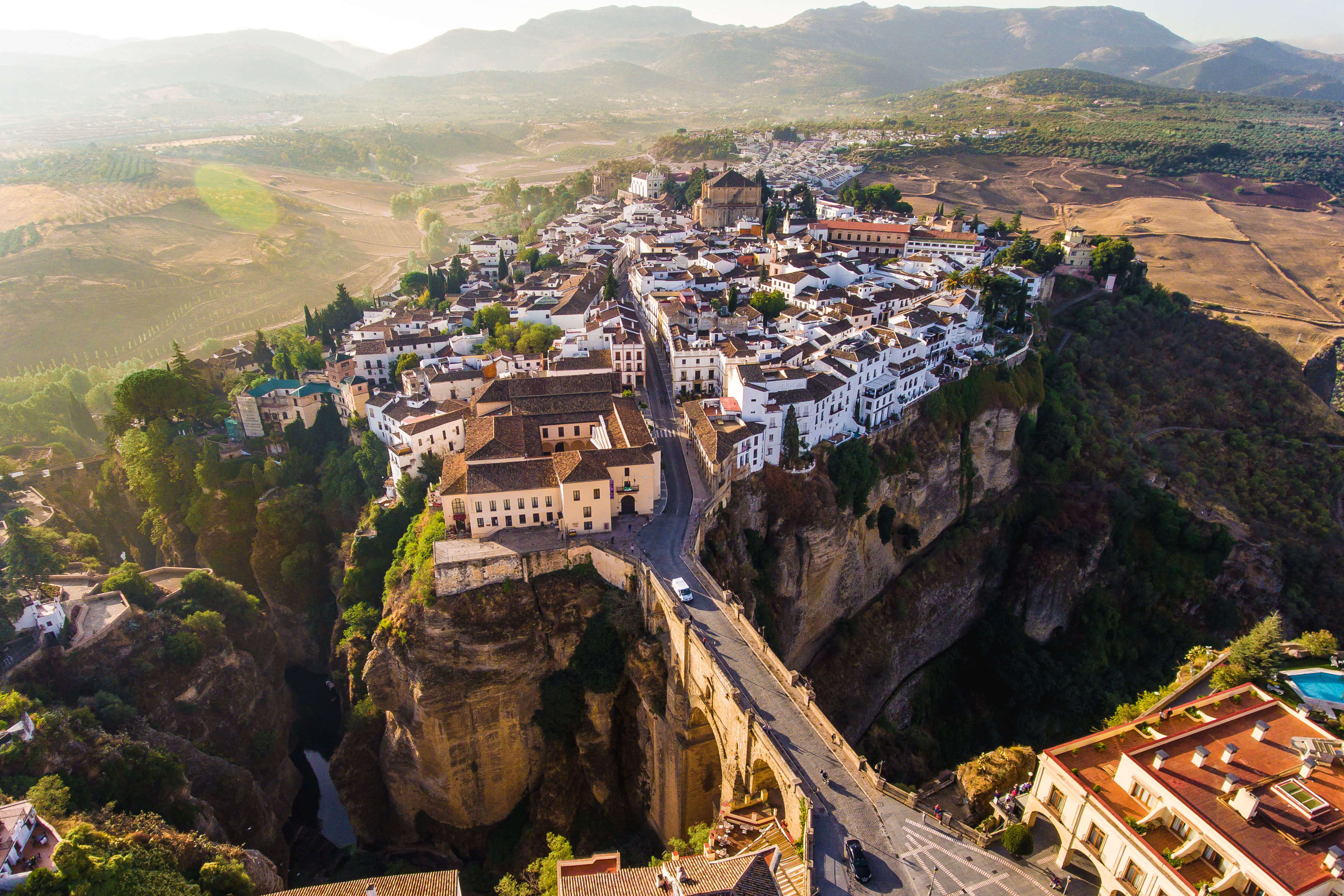1/1 Oops. Incorrect.
0%
0pts Earned
0/1correct
21/21
Which national park has a remote island home to moose and wolves?
Isle Royale is one of the least visited national parks in the U.S., located on an island in Lake Superior near the Canadian border, and closed annually from November to April. Wolves first arrived on Isle Royale by crossing an ice bridge in 1948, and since then, wolves captured in Minnesota, Michigan, and elsewhere have been relocated to the island. Moose are found on the island, too, and scientists closely study the predator-prey relationship between the two populations.
Source: Isle Royale National ParkCrater Lake National Park
12%
Isle Royale National Park
41%
Acadia National Park
38%
Channel Islands National Park
9%
20/21
Which of the following is true of wild turkeys?
Wild turkeys can fly up to 55 mph, and they can run up to 25 mph. Only male turkeys can gobble, which is why they are called “gobblers,” while females are called “hens.” Baby turkeys are called “poults,” and the birds are very different from chickens. Wild turkeys of North America are separated from chickens by more than 45 million years of evolution.
Source: Smithsonian MagazineYoung are called turkettes
11%
Closely related to chickens
17%
All turkeys can “gobble”
19%
They can fly 55 mph
53%
19/21
What is the only marsupial in North America?
A marsupial is a mammal with a pouch, and most of the world’s marsupials live in Australia, including kangaroos and koalas. The Virginia opossum is the only marsupial in North America. Like other marsupials, when the female opossum gives birth, the babies (called joeys) go into the mother’s pouch to mature. Joeys then crawl from the pouch to ride on their mother’s back, depending on her for survival for months.
Source: National GeographicDuck-billed platypus
17%
Virginia opossum
59%
Armadillo
22%
Ringtail cat
2%
18/21
What North American animal has one of the world’s longest land migrations?
The pronghorn — often called an antelope — follows the same annual migration pathway as its ancestors, and it’s one of the longest migrations on record. They travel about 300 miles each year along grasslands of the western U.S., sometimes making their way from Mexico to Canada. The trip is long, but fortunately pronghorns are the fastest animal in North America, traveling up to 60 mph.
Source: World Wildlife FoundationWhite-tailed deer
23%
Pronghorn
53%
Moose
13%
Polar bears
12%
17/21
The giant kangaroo rat is endemic to which state?
The giant kangaroo rat is found on the grasslands of central California, near San Luis Obispo and Fresno. Kangaroo rats are known for their powerful hind legs. They forage seeds and grasses, storing in their cheek pouches, then stashing them in their burrows. The “giant” kangaroo rat is just over a foot long, but they are the largest type of kangaroo rat in the world.
Source: U.S. Fish and Wildlife ServiceCalifornia
42%
Florida
10%
Ohio
5%
Texas
43%
16/21
What kind of animal is a Rhode Island Red?
The Rhode Island Red is a breed of chicken developed in New England in the late 19th century. Farmers selectively bred the birds to lay more eggs, and the bird became quite popular — making the small town of Little Compton, Rhode Island a center for poultry production. In 1954, the Rhode Island Red was named the state bird.
Source: Oklahoma State UniversityDuck
15%
Chicken
74%
Turtle
8%
Horse
2%
15/21
The American pika is a small mammal that lives where?
American pikas are tiny rodent-like animals that live in the alpine terrain above the tree line of the Rocky Mountains. Pikas are a type of small rabbit, measuring about seven to eight inches long, with big round ears. Their brownish-black fur helps them camouflage among the terrain while feeding on the grasses and wildflowers of the Rockies.
Source: National Wildlife FederationLake Superior
5%
Rocky Mountains
78%
Appalachian Mountains
13%
Great Salt Lake
5%
14/21
What type of slug lives on the forest floor of the Pacific Northwest?
The banana slug lives on the damp forest floors of the West Coast, from central California to Alaska. Like bananas, the slugs range in colors from yellow to brown to green. They have no spine, one lung, and one foot, and they are one of the slowest creatures on Earth — moving at a maximum speed of 6.5 inches per minute.
Source: National GeographicPineapple slug
6%
Banana slug
57%
Apple slug
15%
Berry slug
22%
13/21
What North American animal has become an invasive species in Europe?
With their panda-like faces and tiny hand-like paws, raccoons are deceptively cute — but they can be quite the nuisance. The animals are native to North America and can be found throughout the continent. In the 1920s, raccoons were bred in captivity in Germany, and some escaped. Unfortunately, the masked invaders continue to wreak havoc across the continent.
Source: National GeographicRaccoon
47%
Crawfish
15%
Coyote
21%
Opossum
17%
12/21
Monarch butterflies rely on what plant for survival?
There are two main groups of monarch butterflies in North America, western monarchs and eastern monarchs, and the two groups are separated by the Rocky Mountains. Both types of butterflies spend winters in southern California and in Mexico, then head north in the spring, where the females lay eggs on the leaves of milkweed plants. When they hatch, they fly north and repeat the cycle.
Source: National Wildlife FederationMilkweed
67%
Ragweed
8%
Goldenrod
21%
Bull thistle
3%
11/21
What is the largest wild bird in North America?
California condors are North America’s largest land birds (meaning they spend the majority of their time in terrestrial environments) in North America, with wingspans up to 10 feet wide and bodies up to four feet long. The albatross and the pelican, both seabirds, are slightly larger, and domestic turkeys and trumpeter swans are similar in size. After the condor, the bald eagle is the second-largest wild bird in North America.
Source: National Park ServiceBald eagle
5%
Great horned owl
2%
California condor
90%
Golden eagle
3%
10/21
Which of the following is NOT true about American alligators?
American alligators are found only in the U.S., mostly in the wetlands and bayous of southeastern U.S. Despite their short legs and bulky frame, alligators can run up to 35 mph, and they can climb trees. During mating season, an alligator’s roar is as loud as a lawnmower, making it the loudest reptile in the world. But unlike crocodiles, alligators cannot live in saltwater.
Source: National GeographicThey can climb trees
34%
Loudest reptiles in the world
15%
They live in saltwater
34%
Only found in the U.S.
17%
9/21
The Gila monster is named for a river in what U.S. state?
The Gila monster was first found in the Gila River basin of Arizona, but today they are found throughout the deserts of the southwestern U.S. and northern Mexico. The venomous lizard’s bite is painful, but not deadly. The reptiles grow up to two feet long, and they are brightly colored in patterns of black with pink, orange, and yellow.
Source: National GeographicCalifornia
4%
Arizona
68%
Colorado
9%
Texas
18%
8/21
What U.S. state takes its nickname from the American badger?
Wisconsin’s “Badger State” nickname started as a reference to lead mining — badgers are known for living in burrows and using their claws for digging, and Wisconsin miners embraced the association. Lead mining declined in the mid-19th century, but the University of Wisconsin started using the badger as its mascot in 1889. In 1957, the badger was named Wisconsin’s official state animal.
Source: Milwaukee Journal-SentinelWisconsin
83%
Kansas
5%
New Hampshire
4%
North Dakota
8%
7/21
What animal is a national symbol of Canada?
Beavers are a crucial part of Canada’s history, so the humble rodent was a natural choice for a national symbol. In the 16th century, European explorers traded goods with Indigenous groups, and the beaver pelts launched the fur trade that shaped the future of Canada. In 1851, the beaver appeared on Canada’s first postage stamp, and in 1975, the beaver was officially proclaimed a symbol of Canadian sovereignty.
Source: Canadian Broadcasting CompanyPolar bear
9%
Snowy owl
5%
Canada goose
47%
Beaver
39%
6/21
What is the largest land mammal in North America?
Often mistakenly referred to as a buffalo, the American bison is the largest mammal in North America (and the national mammal of the United States). Male bison stand about six feet tall and weigh up to 2,000 pounds. And their heft doesn’t slow them down — they can swim, jump fences, and run up to 35 mph.
Source: U.S. Department of InteriorMoose
39%
Bison
37%
Polar bear
24%
Wolf
0%
5/21
Which of these marine mammals lives in Washington’s Puget Sound?
Orcas, also known as killer whales, are found in every ocean, but the Southern Resident orcas of Washington’s Puget Sound are unique. While some orca pods move through different waters as they hunt, the Southern Resident orcas stay put. There are about 70 in total, split into three groups: the J, K, and L pods. They mostly eat chinook salmon, and while these orcas do migrate, they don’t stray far from the shore.
Source: Nature ConservancyBeluga
20%
Vaquita
7%
Orca
57%
Manatee
17%
4/21
Which of these bear species is unique to North America?
Three types of bears are found in North America: black bears, brown bears, and polar bears. Polar bears roam Alaska and Canada, but they also live in the arctic areas of Greenland, Norway, and Russia. Brown bears are also found across the Northern Hemisphere, but grizzly bears (a subset of brown bears) are unique to the northwestern U.S. and Canada.
Source: National Park ServicePolar bears
13%
Sun bears
2%
Sloth bears
1%
Grizzly bears
83%
3/21
What is the national bird of the United States?
The eagle has been a symbol of strength since ancient times. In the early 1780s, Charles Thomson, the secretary of the Continental Congress, chose a design for a national seal by Pennsylvania lawyer William Barton which contained a small white eagle, but he suggested replacing it with the American bald eagle instead. Congress adopted the design on June 20, 1782.
Source: History.comPeregrine falcon
0%
Bald eagle
99%
Wild turkey
1%
Great horned owl
0%
2/21
What North American animal has its own February holiday?
Groundhog Day is typically celebrated on February 2 in both the U.S. and Canada. The first documented celebration was in Punxsutawney, Pennsylvania in 1886. The town still celebrates the annual appearance of Punxsutawney Phil, despite his 39% accuracy in forecasting an early spring. Groundhogs are a type of marmot that live in the eastern and central U.S., across Canada and into Alaska.
Source: PBSRaccoon
0%
Groundhog
99%
Black bear
1%
Wolverine
0%
1/21
What is the national mammal of the U.S.?
In 2016, President Barack Obama passed a law naming the bison America’s national mammal. The American bison (also called the American buffalo) once roamed the Great Plains in huge herds. In the 18th century, the bison population numbered more than 60 million but was later ravaged by hunting and disease. Of the smaller population that exists today, South Dakota is home to more bison — both wild and privately owned — than any other state.
Source: Department of the InteriorGray wolf
3%
Brown bear
11%
Bison
84%
Elk
2%
Play Quizzes By Category
Play A Trending Quiz
Trending, related and recent quizzes you may be interested in







